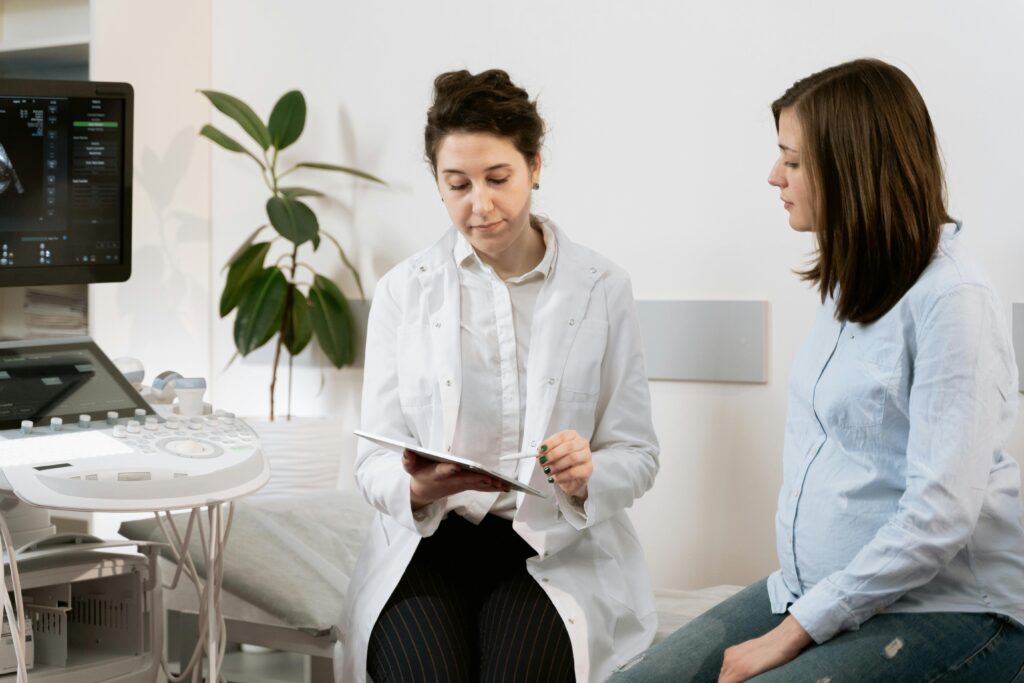Iron is one of the most important nutrients you need during pregnancy because it helps keep both you and your baby healthy by supporting blood flow and overall growth. As your pregnancy progresses, your body grows the new life inside, and consequently, your need for iron increases. In this guide, we will explain why iron is important, specifically, how much you need during each trimester, and how to get enough through food and supplements

Why Iron is Important During Pregnancy?
Iron helps make hemoglobin, the part of red blood cells that carries oxygen to your body and your baby. During pregnancy, your blood volume increases by almost 50%, so your need for iron also increases. Without enough iron, you might develop iron deficiency anemia, which can cause tiredness, weakness, and even complications during delivery. It can also lead to risks like premature birth, low birth weight, developmental delays, and cognitive difficulties later in life in your baby. (1,2).
What is Anemia in pregnancy?
Anemia in pregnancy is defined as a hemoglobin level of <11 g/dl, and is commonly due to iron deficiency. Globally, it is estimated that 40% of all children aged 6–59 months, 37% of pregnant women, and 30% of women 15–49 years of age are affected by anemia (3).
Iron Requirement During Pregnancy: Trimester Wise
- First Trimester: Low Requirement (0.8 mg/day)
In early pregnancy, your baby is small, and your blood volume hasn’t increased much yet. Although the need for iron is low, some women start pregnancy with low iron levels, which can be an issue. It’s important to begin eating iron-rich foods now to build up your iron stores.
- Recommendation: About 0.8 mg of iron daily in early pregnancy.
- Suggestions: Eat foods like lean meat, spinach, lentils, and foods rich in vitamin C (like citrus fruits) to help absorb iron better.
- Second Trimester: High demands as much as 3 mg/day
As your baby grows, your blood volume increases, and your body needs more iron. This is when your iron needs begin to rise.
- Recommendation: About 2-3 mg of iron per day.
- Suggestions: Eat more animal-based iron (like red meat) and plant-based iron (beans, leafy greens). You may also start taking prenatal vitamins with iron if your doctor recommends them.
- Third Trimester:
By the third trimester, your body is storing iron for your baby to use after birth. Your iron needs are at their highest now, and you may need to take supplements to avoid deficiency.
- Recommendation: About 3 to 7.5 mg of iron daily.
- Suggestions: Talk to your doctor about iron supplements, especially if your diet isn’t providing enough. Common supplements include ferrous bis-glycinate and ferrous ascorbate, which are easier on the stomach (3).
How to Meet Your Iron Needs: Dietary Sources
There are two types of iron found in the foods we eat:
- Heme Iron: This type comes from animal sources like meat, fish, and poultry. Our bodies can absorb heme iron easily about 15% to 35% of it gets absorbed. Even though it might be a smaller part of our diet, it provides at least 10% of the total iron our bodies absorb.
- Non-Heme Iron: This type comes from plant foods and foods that have iron added to them. Examples include beans, lentils, spinach, and iron-fortified cereals. Our bodies don’t absorb non-heme iron as well as heme iron.
Iron absorption can be improved by consuming foods rich in vitamin C, such as citrus fruits, bell peppers, and tomatoes. Combining heme (animal-based) and non-heme (plant-based) iron sources also enhances absorption. Additionally, avoiding tea, coffee, and calcium-rich foods during iron-rich meals can help maximize iron uptake.
How to know your iron level is low?
Signs and Symptoms of Low Iron Levels (4)
- Fatigue or extreme tiredness
- Pale or yellowish skin
- Shortness of breath
- Dizziness or lightheadedness
- Weakness
- Cold hands and feet
- Brittle nails or hair loss
- Rapid or irregular heartbeat
- Chest pain
- Headaches
- Restless legs syndrome
- Poor concentration or memory issues
- Cravings for non-food items (pica), like ice or dirt
- Soreness or swelling of the tongue
- Poor immune function (frequent infections)
- Blood Tests:
- Complete Blood Count (CBC): Measures hemoglobin levels, hematocrit, and red blood cell count.
- Serum Ferritin Test: Indicates the amount of stored iron in your body.
- Serum Iron Test: Measures the level of iron in your blood.
- Total Iron-Binding Capacity (TIBC): Assesses how well your blood can transport iron.
Consult Your Healthcare Provider: If you suspect low iron levels, schedule an appointment with your healthcare provider. They can recommend appropriate blood tests based on your symptoms and health history.
References:
- Annamraju H, Pavord S. Anaemia in pregnancy. Br J Hosp Med (Lond). 2016 Oct;77(10):584–8.
- Ren A, Wang J, Ye RW, Li S, Liu JM, Li Z. Low first-trimester hemoglobin and low birth weight, preterm birth and small for gestational age newborns. Int J Gynaecol Obstet. 2007 Aug;98(2):124–8.
- WHO Link – https://www.who.int/data/gho/data/themes/topics/anaemia_in_women_and_children
- Fisher AL, Nemeth E. Iron homeostasis during pregnancy. Am J Clin Nutr. 2017 Dec;106(Suppl 6):1567S-1574S.
- Am Fam Physician. 2007;75(5):671-678
Na